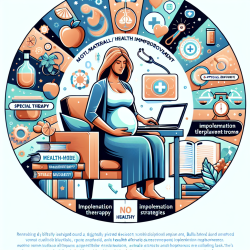Introduction
School nutrition programs are pivotal in ensuring that students have access to healthy and affordable meals. However, the infrastructure of school kitchens and cafeterias can significantly impact the effectiveness of these programs. The research article, "The Relationship between School Infrastructure and School Nutrition Program Participation and Policies in New York City," provides valuable insights into how infrastructure affects meal participation and policies in schools.
Key Findings from the Research
The study highlights several infrastructure-related factors that influence school meal participation:
- Co-location: Schools that share buildings with other schools often face scheduling challenges, which can lead to lower meal participation rates.
- Overcrowding: Overcrowded schools tend to have lower participation in breakfast and lunch programs, especially in elementary schools.
- Service Line Type: The type of service line (e.g., double service lines, T-lines) can significantly impact meal participation, with some configurations promoting higher participation rates.
- Enrollment-to-Capacity Ratios: High enrollment-to-capacity ratios are associated with lower meal participation, particularly in elementary schools.
Implications for Practitioners
Practitioners can leverage these findings to enhance school nutrition programs by:
- Assessing Infrastructure Needs: Conduct thorough assessments of school kitchen and cafeteria infrastructure to identify areas for improvement.
- Advocating for Infrastructure Investments: Use the research findings to advocate for investments in school infrastructure, such as upgrading service lines and expanding cafeteria capacities.
- Implementing Efficient Scheduling: Work with school administrators to optimize meal schedules, especially in co-located and overcrowded schools, to ensure students have adequate time to eat.
- Promoting Policy Changes: Encourage policy changes that address infrastructure-related barriers to meal participation, such as revising open campus policies or adjusting lunch period timings.
Encouraging Further Research
While this study provides valuable insights, further research is needed to explore additional factors influencing school meal participation. Practitioners are encouraged to conduct local studies to understand the unique challenges and opportunities within their districts. Collaborating with researchers can also help in developing targeted interventions that address specific infrastructure-related issues.
Conclusion
Improving school infrastructure is crucial for enhancing the effectiveness of nutrition programs. By addressing infrastructure-related barriers, schools can promote higher meal participation rates, ensuring that more students benefit from nutritious meals. Practitioners play a vital role in advocating for and implementing these changes, ultimately contributing to better health outcomes for students.
To read the original research paper, please follow this link: The Relationship between School Infrastructure and School Nutrition Program Participation and Policies in New York City.










